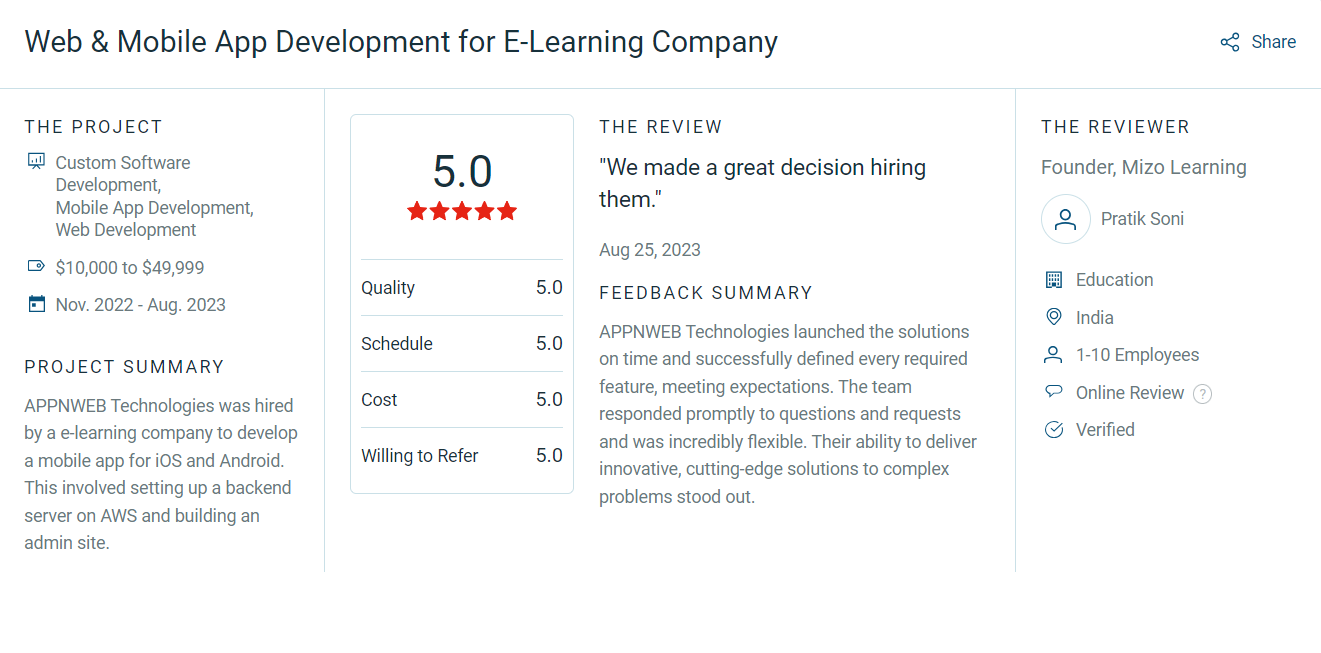What is Agile Methodology: A Brief Guide

Content Writer
Think for a minute about your favorite athlete. Unless they’re Sumo players, strength and sheer power are only part of the story. For sports women and men, real success on the playing field comes with certain hard-to-teach deftness.
Change is the only constant in business (and, yes, in life). Agile methodology development in custom software building is a way of working that aligns with the flow of inevitable change. As our businesses, social, economic, and political environment has become unpredictable, the only way to meet the challenges of rapidly changing times is to change with them. Agile methodology development can help you achieve that.
Agile is a way of working that is expected to harness the inevitability of change rather than resist it.
From the start, organizations are constantly searching for ways to keep up with changing technology and evolving markets. And when the name of the game is speed, everyone must become more flexible and nimble than ever. And that’s where agile methodology comes into the scene. In this piece today, we’re walking you over agile methodology development, what is agile methodology, agile methodology benefits, types of agile methodology, and why and how agile methodology is used.
History of Agile Project Management
The agile project management approach was founded by a group of people who wanted a better approach to the traditional waterfall development process.
It may seem like agile methodology development is an idea of the 21st century, but its roots lead back to the Rapid Application Development (RAD), pioneered by IT engineer James Martin in the 1990s. It was an enhancement of the top-down waterfall model.
The Agile Alliance was the beginning of today’s Agile Development approach. In the Agile Alliance, launched in 2001, 17 technologists drafted a document called Agile Manifesto. They crafted the 12 principles and four pillars of agile project management, that are covered below.
|
What is Agile Methodology
Super adaptable, agile methodology development is an incremental and non-linear project management approach. It’s based on breaking down large projects into more manageable tasks that can be completed in short iterations throughout the project development lifecycle. After every sprint team can trace back to check whether there’s something that can be improved and adjust the strategy for the next sprint. |
If you’re new to the agile process, it might look complex and difficult to manage at first. But, whether you realize it or not, on some levels, you’re already handling things in a way the agile approach requires. Teams that adopt agile methodology are able to work faster, adapt to changing project requirements, and optimize their workflow. As the name suggests, in web development services agile methodology in software testing allows teams to be better equipped with quickly changed focus and direction.
In agile methodology, teams share responsibilities to communicate and collaborate better among themselves. Results are analyzed more frequently, and teams adapt to feedback and desired results, maintaining a process of continual development.
Feeling confused about how agile methodology works? Get a brief tour of how and why agile technology is used, schedule a call now with our ninja consultants.
Benefits of Agile Development Methodology
After having an educated guess about what agile methodology is, let’s discover the benefits of agile methodology. The agile method has gained momentum among managers and software developers. And it’s no surprise why. The counterparts of Agile - adaptability, iteration, continuous delivery, and short time frames - make it a style that’s better suited for projects where certain details aren’t known from the outset. Let’s move forward and discuss the agile methodology benefits.
Adaptable
There’s a reason why it was named Agile Methodology development. One of the benefits of using agile processes in development is the ability to shift strategies quickly, without disrupting the flow of the rest of the process. The overlapping of phases in the waterfall method makes it challenging to shift from one phase to another in case any changes are required and can disrupt the whole project roadmap. Since software development itself is a more adaptable field, it requires rapid changes. This is the reason agile project management is more favored in software development.
Collaborative Teamwork
Agile encourages a high degree of engagement and collaboration between the client and teams. One of the agile principles states that the most effective way of interacting with your team is face-to-face. Combine this principle with the approach of breaking the project silos and you’ll have a recipe for collaborative teamwork.
Because of the encouraged transparency, this leads to happier clients. While technology has evolved and work has shifted to more remote-friendly setups, the love for working face-to-face still hasn’t changed.
Focused on Customer Needs
Agile project management is all about being nimble; it allows teams to pivot due to changing client needs, shifts in market demands, and evolving product requirements. Customer satisfaction is always the key driver in the success of any business. With the rise of cloud-based software, it has become convenient to get instant feedback from clients. With that, Agile teams can prioritize features that focus on customer needs.
Predictable Cost and Scheduling
Breaking down the development process helps teams estimate costs, and predictable timelines, and set clear goals more accurately. Better scheduling allows stakeholders to plan their budget and marketing strategies more precisely.
Now that we have covered the agile methodology benefits, it’s time to discover the four pillars of agile methodology.
Four Pillars of Agile Methodology
In the overview of what is agile methodology unearth the four pillars of the agile process. The Agile Manifesto outlines four pillars of agile methodology development that serve as a North Star for any team adopting an agile approach.
Individuals and Interactions
As sophisticated as technology gets, the human touch will always be an exceptional element. Relying too much on processes and tools results in an ability to adapt to change.
Working Software over Comprehensive Documentation
As important as documentation is, working software is vital. Agile methodology in software testing is more about giving the developers exactly what they need and getting the work done without overloading them.
Customer Collaboration over Contract Negotiation
The most valuable asset of your business is your clients. They are the backbone of your organization. Whether internal or external involving them throughout the process ensures efficient product delivery.
Responding to Change over Following a Plan
This last value is one of the biggest departures from traditional project management. This value allows teams to swiftly shift strategies and workflow without derailing the project.
12 Principles of Agile
The four pillars of agile methodology development are the values of agile. From those values, the team developed the 12 principles of agile. Let us put it this way, if the four values are the weight-bearing pillars of a house, then these 12 principles can be the rooms or a family that you’ll build in that house. It's easy to adapt these principles according to your team's needs.
- Satisfy your clients through early, continuous improvement, and delivery.
- Always welcome end-moment modifications, even late in the project.
- Deliver value frequently to your customers and stakeholders and make it less likely for them to churn.
- Make your team collaborate together more frequently throughout the project.
- Surround yourself with motivated individuals and work actively to achieve a goal.
- Prioritize face-to-face communication within your team.
- Measure your progress by the final work of the product.
- When dealing in the field of web development services maintain a steady working pace.
- Enhance agility through continuous enhancement of technical and design excellence.
- Simplicity is an art - to life and to work as well.
- Self-organizing and accountable teams generate the most value.
- Regularly adjust and reflect on your way of work to boost effectiveness.
These values and principles can be applied to numerous frameworks and development processes.
Agile Methodologies
Agile is an umbrella term for a wide variety of methodologies that share the aforementioned principles and values. Each has its own area of use and distinctive features. Agile methodologies can be categorized as follows.
Scrum
Scrum is an agile framework that focuses on cross-functional teamwork, accountability, and delivering and supporting complex products. The team is led by the scrum master whose main job is to clear all the roadblocks for others executing the day-to-day work.
Kanban
Kanban gives three guiding principles
- Visualize your workflow
- Limit the amount of work in progress
- Organize the workflow based on priority
Unlike Scrum, Kanban doesn’t have any pre-decided roles or time-boxed sprints. Instead, it focuses on a shorter, faster cycle of delivery and transparency. Visualizing the process helps everyone stay on the same page and make sure the efforts are focused on the high-priority work.
Extreme Programming (XP)
Extreme is the most specific agile framework that outlines values that will allow your team to work together more effectively. Similar to daily scrum stand-ups, there are regular releases, yet XP is much more technical in its approach.
The five values of XP include
- Communication
- Simplicity
- Feedback
- Courage
- Respect
Feature-driven Development
FDD blends different Agile best practices. It’s a client-centric methodology that focuses on incremental development and status reporting across all levels. This approach helps prevent two of the obstacles in software development - confusion and rework. Now that we’ve covered what is agile methodology, agile methodology benefits, types of agile methodology, and why and how agile methodology is used allow us to share the 6 steps of agile management that can be used in custom software development.
6 Steps of Agile Management
What is agile methodology and what are the benefits of agile methodology are the most asked questions. The goal of Agile Methodology is to produce shorter development cycles and more frequent product releases than the traditional waterfall model. Shorter time frames allow teams to react to changes according to the client's needs. There are 6 stages in agile methodology development.
Planning (Ideation)
As with any other work, your team should first understand the client, end goal, and how it will be achieved. The planning or ideation is the first step in the Agile lifecycle. Experienced professionals understand that planning is the foundational pillar of the entire project. Complemented by key inputs, the planning sheet should have:
- The product idea
- Market research and user profiles
- Market gaps and competitive pain points
- List of Competitors
- Detailed project scope
- Objective and key results
- Team details
Design the Requirement
When you have identified all the project details, work with stakeholders to define requirements. You can leverage the UML (Unified Modeling Language) to showcase your work and how it will apply to your existing system.
Iteration (Development)
Only after successful planning and proper documentation of data, you can move the project to the development stage. Designers and developers start working on the project, which aims to deploy a working product. The agile methodology in software testing encourages team members to work in a sprint, typically lasting two to four weeks. These sprints are designed to make the development process as smooth and efficient as possible. During each sprint, you’ll need to start with a set of tasks, taking the important and complex ones first.
Testing
This stage verifies whether the product quality is meeting the expectations or not. The quality assurance team will examine the product’s performance and look for the bug.
Deployment
Ready to get the reality check? Deployment is the stage where the team issues a product for the user’s work environment.
Review (Feedback)
The review stage involves so much more than merely addressing the bugs. Review stage make sure that the product continues to meet the needs of your client. You’ll need to monitor the software for bugs and issues and address them as they arise.
Agile Yesterday, Today, and Tomorrow
The release of the Agile Manifesto in 2001 marks the birthdate of Agile as a methodology. Since then, several frameworks have emerged including - Kanban, Scrum, Lean, XP, and others. Each embodies the core principles and values of agile methodology development. The great thing about Agile is it’s more of a guideline than an actual rulebook. So whatever agile process you follow, make sure it addresses your client and team needs.
In addition to, what is agile methodology, the above shared are the most basic and important parts of Agile methodology development. As you transition your team to an agile process these processes, roles, and principles will help you change your mindset and be more flexible and adaptable.
Openness, trust, and autonomy are emerging as the basic culture for companies that are working to attract the best clients. Such companies are already proving that results can vary across teams, as long as teams are guided in the right direction.
On the hunt for such a worthy organization to handle your project? Go nowhere. Ring us up now and get a free consultation.
FAQs on Agile Methodology Development
What are the biggest challenges of Agile Development?
Resistance to change is a common behavior. Common challenges encountered in agile methodology development are -
- Changing requirements
- Inadequate test coverage
- Slow feedback loop
- Skipping essential tests
- Taking a waterfall approach to agile rollout
- Financial Clashes
Overcoming these challenges requires effective communication, adaptability, and commitment to use agile principles.
What are the most popular tools for agile project management?
As discussed above with agile methodology benefits, there’s a wide range available for agile project management tools. A few of the most popular frameworks to implement an Agile methodology include:
- Scrum
- Kanban
- Extreme Programming
- Crystal
- Disciplined Agile Development
When is project management considered truly Agile?
Project handled with agile methodology development approach is truly considered agile when it includes the following:
- Transparency
- Adaptability
- Customer focus
- Steady improvement
- Shared leadership
Thanks for reading!
Have a project in mind? Schedule a free consultation today.
Get StartedLet’s Dive In!
We’re a leading web and app development company with 14 Years of serving tech solutions that’ll help you maximize your business value.















 Hire Flutter Developers
Hire Flutter Developers
 Hire Blockchain Developer
Hire Blockchain Developer
 Hire WordPress Developer
Hire WordPress Developer
 Hire Magento Developer
Hire Magento Developer
 Hire Laravel Developers
Hire Laravel Developers
 Hire SaaS Developers
Hire SaaS Developers
 Hire Shopify Developer
Hire Shopify Developer
 Hire the Best Android Developer
Hire the Best Android Developer
 Hire PHP Developer
Hire PHP Developer
 Hire the Top 3% of Java Developers
Hire the Top 3% of Java Developers
 Hire Fully Vetted Angular Developers
Hire Fully Vetted Angular Developers
 Hire ReactJS Developers in India
Hire ReactJS Developers in India
 Hire iOS Developers in India
Hire iOS Developers in India
 Hire React Native Developers
Hire React Native Developers
 Hire Python Developers
Hire Python Developers











